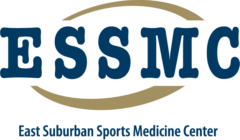Foot and Ankle Pain
Plantar Fasciitis:
The Plantar Fascia is a band of dense tissue that is located along the sole of the foot from the heel to the base of the toes and helps to support the arch during standing and walking. Plantar fasciitis is the presence of heel pain as a result of the tissue having microscopic tears near the heel. With conservative treatment (such as physical therapy), about 95% of individuals will have resolution of symptoms within 6 to 12 months.
What can cause Plantar Fasciitis?
Prolonged standing or walking
A recent increase in activity levels
Limitations in ankle motion (Possibly from calf muscle tightness)
High or low arches of the feet
Obesity (More specifically, a Body Mass Index (BMI) greater than 30 kg/m2)
Common Symptoms of Plantar Fasciitis:
Pain on the underside of the foot near the heel, especially with the first steps in the morning
Pain at the end of the day
Decrease in pain with moderate levels of activity
How is Plantar Fasciitis treated conservatively?
At home:
rest, use ice after exercise, and over the counter pain relievers
Wear supportive shoes, such as athletic shoes, and avoid walking barefoot
Replace worn out shoes
In a physical therapy setting:
Modalities:
Iontophoresis: this is a technique that uses a small electric current to deliver medication through the skin. Your doctor will write a prescription for this medication which will then be administered at physical therapy.
Ultrasound: this modality can be used to warm up the plantar fascia to allow it to be flexible and minimize the tightness that has occurred since the onset of the injury. It is also helpful in decreasing inflammation.
Exercises:
stretches for the plantar fascia, the calf muscle, and any other exercises that fit specific needs of the individual can be prescribed by the physical therapist.
Manual therapy:
The physical therapist can perform hands on techniques to improve the mobility of the plantar fascia and improve the flexibility of the surrounding muscles and joints.
Orthotics:
The staff at ESSMC can take cast molds for custom orthotics. Additionally, ESSMC provides Vasyli orthotics and Vionics footwear. Each of these options can provide appropriate support to the foot and ankle, therefore aiding in the recovery (or prevention of) plantar fascia.
Ankle Sprain:
One of the most common injuries in the active/athletic population is the ankle sprain. The injury typically occurs when weight bearing (i.e. running or walking), and the foot is pointed away from the knee followed by the ankle rolling outward. The sprain can also happen if the ankle and leg are rolled on – such as a football pile up. The resulting injury can range from mild to severe.
The ankle joint is formed by the two lower leg bones, the larger tibia on the inside and the smaller thinner bone, the fibula running down the outside. The two bones form a dome, which holds the talus bone of the foot. Strong thick ligaments connect the bones, covered by a sleeve, or capsule. When the ankle rolls outward, the ligaments can be stretched or torn, resulting in varying degrees of pain, internal bleeding, and swelling around the ankle joint. Sprains are graded as 1 or mild, 2 or moderate, and 3 being severe and involving more ligaments.
Treatment for ankle sprains is extremely important in the first few days to minimize swelling. Crutches can be used initially. Pressure in the form of a foam horseshoe and ace bandage, along with ice and elevation (higher than the heart) are essential for the first 48-72 hrs. Physical therapy treatment should begin as soon as possible to include whirlpool, electrical stimulation, JOBST compression, massage, and progressive weight bearing to reduce the swelling and promote healing.
Once the acute phase is managed, treatment continues along with the addition of exercise for range of motion, strengthening of the ankle muscles, and proprioception (fine tuning agility) exercises to return to physical activity. An ankle sprain will feel better long before the strength and proprioception are back to normal. It is important to continue with a home exercise program for a few months to prevent reoccurrence and additional ligament damage. In some cases, ankle bracing and or ankle taping is effective in allowing return to activity or sports.
